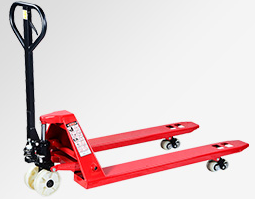News Details
Structure and working principle of manual hydraulic transport vehicle
As a reliable assistant for logistics and warehousing, manual hydraulic handling vehicles are widely used for short distance cargo transportation due to their lightweight and flexible characteristics. Its structural design is compact and functionally clear, and its working principle relies on mature hydraulic transmission technology, jointly ensuring efficient operation.
The manual hydraulic transport vehicle is mainly composed of four major systems. The load-bearing system is the core, including forks, fork racks, and bases. The forks are made of high-strength steel and can carry goods deep into the bottom of the pallet, while the base provides stable support for the entire vehicle. The hydraulic system is the power core, consisting of a hydraulic pump, hydraulic cylinder, oil tank, oil pipe, and relief valve. The hydraulic pump is connected to the operating handle, and the hydraulic cylinder directly drives the fork to lift and lower. The steering system consists of front and rear wheels, with the front wheels responsible for flexible steering and the rear wheels cooperating to maintain stable driving. In addition, the braking device is integrated at the operating handle, which can quickly achieve parking braking.

Its working principle is based on Pascal's law. When lifting goods, press the operating handle to drive the hydraulic pump piston to move, and the hydraulic pressure in the oil tank is injected into the hydraulic cylinder. Hydraulic oil generates pressure in a closed space, pushing the piston rod of the hydraulic cylinder upwards, thereby driving the fork frame and fork to rise synchronously, completing the lifting of goods. When lowering the cargo, pull the lowering control lever to open the return valve of the hydraulic cylinder. The hydraulic oil flows back to the oil tank under the weight of the cargo, and the piston rod slowly retracts, causing the fork to descend smoothly. When turning, the handle drives the front wheels to turn, and the rear wheels roll to adjust the direction of the entire vehicle. The operation is easy and the control is precise.

